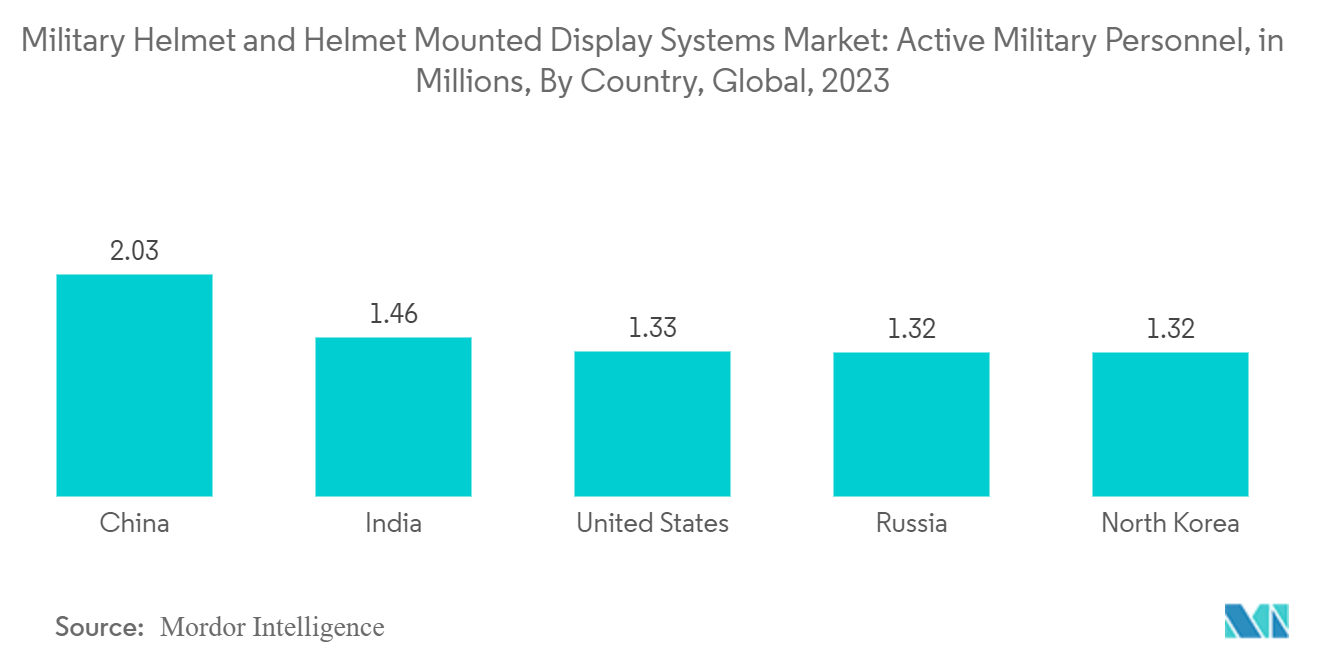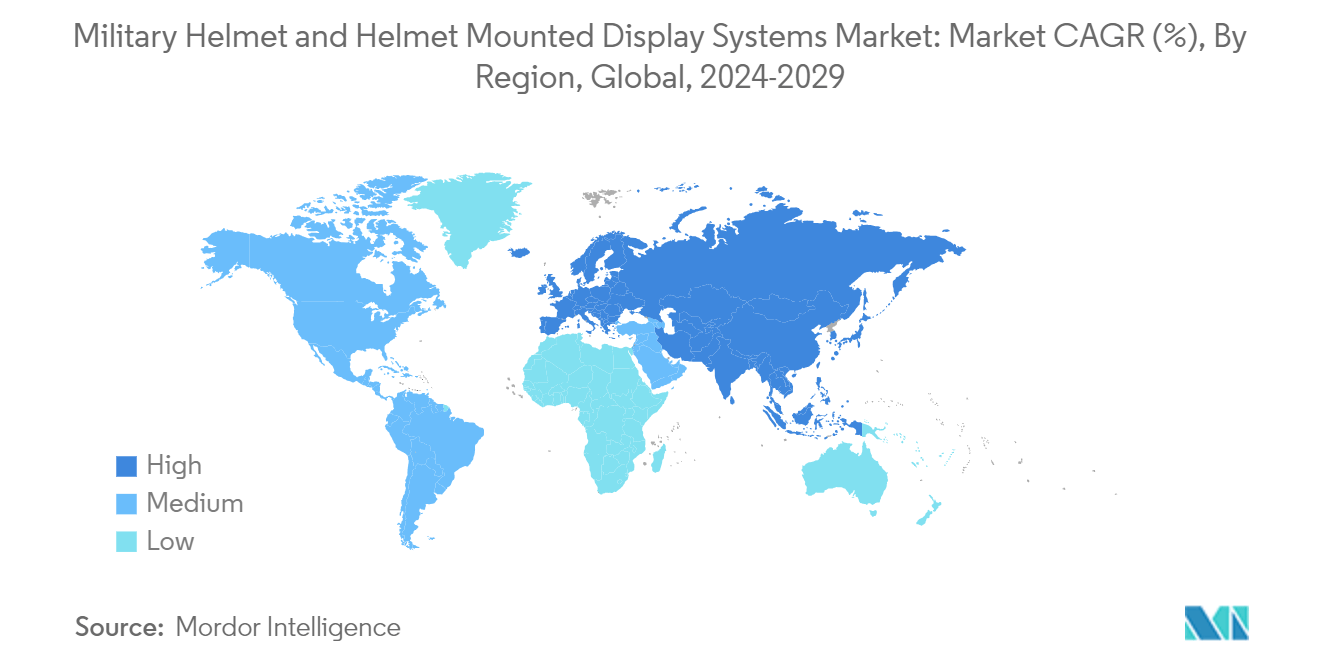Market Trends of Military Helmet And Helmet Mounted Display Systems Industry
Helmet Mounted Displays Segment is Expected to Witness Significant Growth During the Forecast Period
An HMD device projects visual information directly to soldiers' eyes, enhancing their situational awareness, especially in scenarios where head protection is crucial. Integrated into the helmet's design, the display optics assembly offers military pilots an augmented view of their surroundings. It is vital for split-second decision-making, often a matter of life and death. By recognizing this, military entities globally are investing heavily in advanced HMD systems.
Rising cross-border conflicts, political tensions, and the specter of terrorism have underscored the need for bolstered defense capabilities. This has translated into heightened defense spending and an expansion of military forces, driving the demand for sophisticated helmet-mounted displays, especially with the increasing number of military personnel.
Collins Aerospace and Elbit Systems Ltd. collaborated to develop a cutting-edge third-generation HMD for the US Navy. This system seamlessly integrates a helmet-mounted display, head-up display (HUD), and visor-projected night vision, empowering fighter pilots with enhanced targeting capabilities and superior situational awareness.
For instance, in December 2023, the US Navy avionics division revealed its plans to procure a production lot of third-generation helmet-mounted displays for Lockheed Martin Corporation's F-35 Lightning II joint strike fighter, with the contract valued at approximately USD 174.6 million. This followed a USD 347.4 million order placed in August 2022 for production lots 15 and 16 of the F-35 helmet-mounted display. These advancements have enhanced the capabilities of HMDs and opened up new avenues for their application, driving the market's growth.

Asia-Pacific is Expected to Register the Fastest Growth During the Forecast Period
In recent years, there has been significant growth in cross-border conflicts, warfare situations, and political disputes among neighboring countries in Asia-Pacific. India, China, Japan, and South Korea increased their defense expenditures to improve defense capabilities and procure advanced helmets for fighter jet pilots and army personnel. The Stockholm International Peace Research Institute (SIPRI) report stated that in 2023, China ranked as the world's second-largest military spender, allocating a substantial USD 296 billion. India was the fourth largest defense spender, with a defense expenditure of USD 83.6 billion. With a global emphasis on personnel safety, the demand for helmets and related technologies continues to increase.
Furthermore, the increased adoption of technologically advanced helmets, helmet-mounted displays, and a growing number of military personnel are driving the market's growth. For instance, in November 2023, MKU Limited, an Indian defense company, launched its latest personal soldier product, the Kavro Doma 360 lightweight ballistic helmet. The helmet weighs a minimum of 1.45 kg and has several features designed to provide military personnel comfort and protection. Thus, the increasing procurement of next-generation helmets and accessories and the growing focus on enhancing soldiers' security are expected to boost the market's growth across the region.


